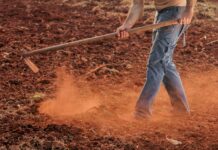All indicators pointed to downbeat conditions ahead of the release of the Agbiz/IDC agriculture business confidence for the second quarter (Q2) of 2023 which steadied but was still below the break-even level of 50 points and the lowest level since Q2 2020.
First, was the sharp contraction of 12.3% in agriculture GDP in the first quarter of 2023 which reflects a downturn in economic activities and commodity prices in the field crops and animal product industries. Load shedding had the biggest impact particularly on the poultry industry and abattoirs as the intermittent supply of electricity affected production schedules and increased costs of operations due to running diesel generators for extended periods.
Maintaining the cold chain post‑slaughtering is critical for meat due to the perishability of the product. Secondly, the SARB’s additional 50-basis points interest rate hike in its May 2023 review thus bringing the repurchase rate to over a decade high of 8.25%. This raised debt servicing costs and consequently a further squeeze in profit margins and slowing expansion plans. For example, agriculture machinery sales have slowed in 2023 as farmers proceeded cautiously on their replacements and new additions.
Nonetheless, the sector still showed some resilience despite tough operating conditions with some subindices such as turnover, net operating income, market share of the agribusiness, capital investments, and volume of exports remaining way above the 50-point level despite recent declines at 64, 61, 57, and 55 points respectively. All these indicate to us that the sector could easily flourish and contribute immensely to SA’s growth if all impediments such as a significant reduction in loadshedding, improvement in logistics infrastructure, addressing biosecurity issues, and certainty about the policy environment, materialise.
We already expect a huge harvest from the summer and winter crops with recent crop estimates indicating a 6% increase in overall grain and oilseed production for the season to 20.20 million tons with output for maize, SA’s biggest stapple, increasing by 4.6% y/y to 16.19 million tons despite a contraction in planted area.
The outlook for export commodities has improved after two years of tough trading conditions. The rand exchange rate has turned positive and will boost export revenues. Further, traction on the export market is relatively good for most export commodities despite constrained consumer budgets in destination markets with elevated interest rates and inflation in Europe and the United Kingdom. Shipping costs have also fallen sharply from the 2022 highs as reflected in the Drewry World Container Index which showed a 78% y/y decline during the first week of June 2023 at US1,681/ 40-Ft container and was 37% below the 10-year average of US$2,688.
Looking forward to a rebound in agriculture growth in the second half of 2023, and for 2024, the lingering El Nino weather pattern may dampen the outlook if it turns out to be deeper than expectations.








